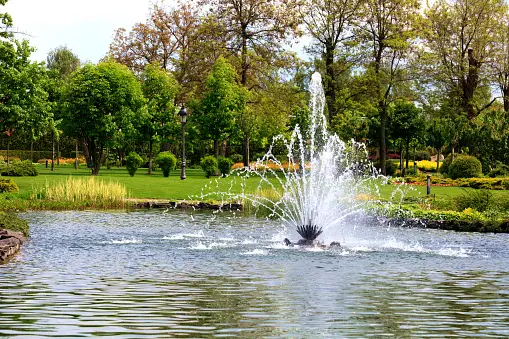When you mention outdoor fountains, the image that comes into most people’s minds is that of an elaborate, large fountain sitting outside of a museum or business building. However, outdoor fountains are also found in lake homes and properties with ponds, and there has been an uptick in the number of homeowners adding them to their properties. Outdoor fountains come in many shapes and sizes and can be made from a variety of materials.
Benefits of Adding Outdoor Fountains to Your Home: In addition to being elegant and impressive, outdoor fountains offer more advantages than you may be aware of.
Calming and Relaxing Ambience: Outdoor fountains can help you create a peaceful space that you can enjoy any time of day or night. The sound of water flowing and gently splashing is not only soothing but also mesmerizing. Top this off with a variety of plants and decorations and you have your own meditative oasis right in your garden.
Drown out Unwanted or Unpleasant Sounds: Living in a busy town means that you have to put up with many unpleasant noises on a daily basis. With an outdoor fountain, you can mask or lessen the intensity of different sounds in your surroundings. Noises from traffic and loud neighbors can be masked with a simple fountain.
Attract Wildlife: Outdoor pond fountains attract birds and animals which can enhance your outdoor space experience. With a working fountain, you can expect regular visits from birds, waterfowl, squirrels, and other creatures that drink water from it.
How to Choose the Best Outdoor Fountain: Not all fountains are the same and there are important factors you need to consider to make an informed decision when making a purchase.
Fountain Style: Before heading out to buy an outdoor fountain, consider which style of fountain and water pattern you think would complement the rest of your home’s decor. You can go for a classical or modern style (and just about everything in between) and choose what you prefer.
Materials and Color: Today, outdoor floating fountains are generally made with roto or blow-molded plastic floats, some with light kits. The best option, however, is to avoid plastic when possible (see the Admiral Fountain with its unique polymer float) for longevity. Brass and stainless steel materials are the best and will provide long-lasting use. The materials used to make the fountain will also have some bearing on its texture and color. While most people prefer a more natural, “hidden” look for their fountains so that very little of the fountain is seen, there are several options to choose from, some more visible than others.
Tips for Maintaining an Outdoor Fountain: A floating pond fountain demands more care than an indoor one. This is because it is exposed to the elements and other debris from the surrounding. To ensure the longevity of your fountain, you’ll need to learn how to properly care for it and again, look for quality materials such as brass and stainless steel.
Location: When choosing a location for your fountain, avoid spots that are too close to trees or near the sidings of your house. Twigs, leaves, dirt, and branches will decay if not cleaned out regularly, resulting in clogging. As such, purchasing a fountain with its own built-in filter is preferable, as is installing your fountain away from trees to reduce cleaning.
Add White Vinegar: For ponds with a pH level of 7.5 or over, white vinegar is very effective in gaining clean, clear water. It is environmentally-friendly, anti-fungal, and antibacterial and will prevent the growth of bacteria and algae. You may add ¼ cup for every 500 gallons of water or until pH levels fall under 7. Do so slowly and test daily as a gradual change is preferable when fish or wildlife are present.
How to Plant inside and Around your Outdoor Fountain: If you are installing an outdoor fountain in your pond, chances are that you want to add some plants nearby. Plants will not only add color but also smell good. Plants help purify your air while providing shade. Choosing the right plants to add in and around your fountain is very important. Avoid going overboard with too many plants as this can lead to an unpleasant bog build-up and algae growth. Also, try and plant with a purpose. Rather than simply going for the plants with the best smells or colors, try to use plants that prevent the growth of algae such as Sweet Flag and Iris.







